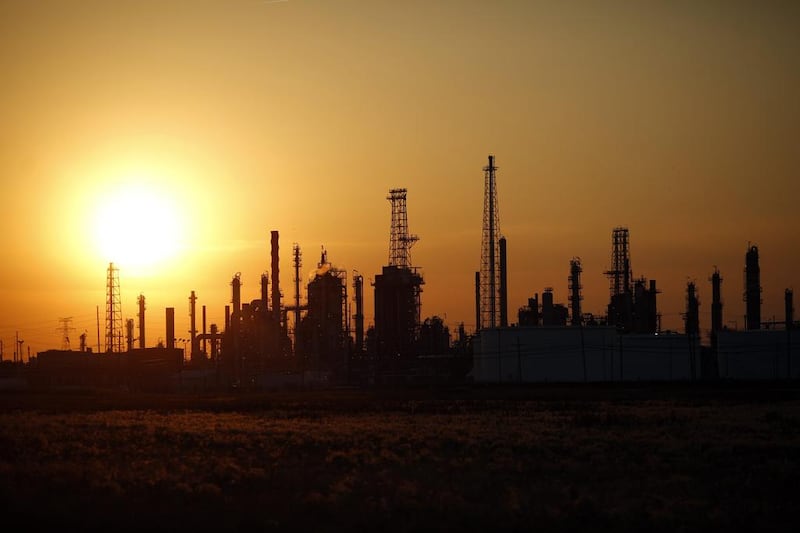Oil pared gains after an industry report was said to show US crude stockpiles unexpectedly rose last week.
Inventories increased by 1.63 million barrels in data from the industry-funded American Petroleum Institute released Tuesday, people familiar with the report said. That would be the largest build since June if confirmed by Energy Information Administration data on Wednesday. Gasoline supplies slid by 5.45 million barrels, while stockpiles in Cushing, Oklahoma increased by 608,000 barrels, the API was said to report.
“I do expect a modest draw in crude,” James Williams, an economist at London, Arkansas-based energy-research firm WTRG Economics, said by telephone. But if the EIA confirms API’s crude build, “I think we see crude prices go down. There’s no doubt about it. We certainly consider returning to the bear market trend.”
West Texas Intermediate for August delivery traded at US$46.25 a barrel at 5:01 p.m. on the New York Mercantile Exchange, after settling at $46.40 a barrel. Total volume traded was about 3 percent above the 100-day average.
Brent for September settlement advanced 42 cents to end the session at $48.84 a barrel on the London-based ICE Futures Europe exchange. The global benchmark crude traded at a premium of $2.25 to WTI.
Oil has hovered below $50 amid concerns that the Organization of Petroleum Exporting Countries and its allies won’t be able shrink a longstanding glut, as producers such as the US and Libya ramp up output. Citigroup Inc. cut its oil-price forecasts for this year and next as Libya and Nigeria restore previously halted supplies and US production climbs.
Earlier in the session, oil rose as much as 2 percent following a report from U.K.-based consultant Petroleum Policy Intelligence saying Saudi Arabia is considering cutting exports further by as much as 1 million barrels a day to offset the rise in output from Libya and Nigeria.
Ecuador Oil Minister Carlos Perez said he spoke to Saudi Arabian Energy Minister Khalid Al-Falih and that both countries are committed to reducing inventories to a “normal” level, a day after he said the South American country would need to increase output to boost revenue.
“The market is waiting for the proof in the pudding,” Michael Loewen, a strategist at Scotiabank in Toronto, said by phone. “There’s a lot of chatter these days. If Saudi Arabia is actually going to reduce exports” investors will need to see it in tanker-tracking data before they believe it, he said.
Saudi Arabia crude oil exports fell to 6.924 million barrels a day in May from 7.006 million barrels a day in April, according to JODI data. Iraq’s crude exports rose 1.7 percent to 3.818 million barrels a day, the data showed.
OPEC member Kuwait last week said Libya and Nigeria may be asked to cap their oil output amid concern about their rebounding production.
Libya will participate in a technical meeting with fellow OPEC members as well as Russia in St. Petersburg on July 22 to share the “factors enabling and constraining Libya’s production recovery,” Mustafa Sanalla, chairman of the National Oil Corp., said on Tuesday. Supplies from Libya have increased to 1.1 million barrels a day, according to a person familiar with the matter.
US crude inventories probably decreased 3.5 million barrels last week, according to a Bloomberg survey before an EIA report Wednesday. Crude stockpiles at Cushing, Oklahoma, the delivery point for WTI and the biggest US oil-storage hub, probably fell by 1.5 million barrels last week, according to a forecast compiled by Bloomberg.
*Bloomberg






